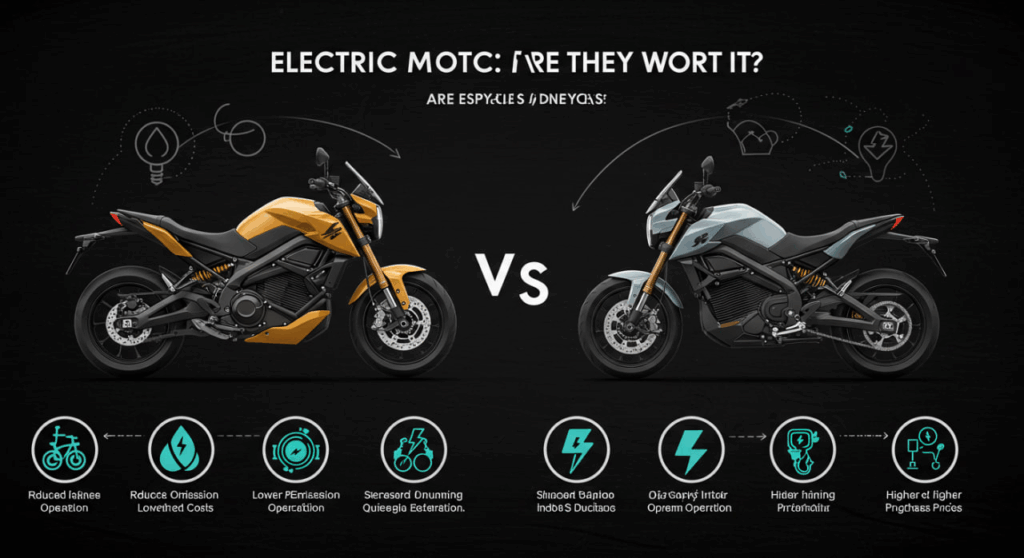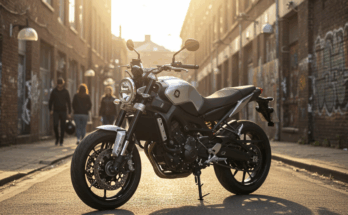Electric motorcycles have roared onto the scene, promising a thrilling ride with a greener footprint. As battery technology advances and environmental concerns grow, more riders are considering swapping their gas-guzzling bikes for electric alternatives. But are electric motorcycles truly worth the hype, or are they just a flashy trend? In this detailed review, we’ll explore the performance, cost, environmental impact, and overall experience of electric motorcycles to help you decide if they’re the right choice for you.
Why Electric Motorcycles Are Gaining Traction
The rise of electric motorcycles mirrors the broader shift toward sustainable transportation. Unlike traditional internal combustion engine (ICE) bikes, electric motorcycles run on lithium-ion batteries, producing zero tailpipe emissions. This makes them an attractive option for eco-conscious riders who want to reduce their carbon footprint. Beyond environmental benefits, electric motorcycles offer instant torque, delivering a smooth, responsive ride that can outpace many gas-powered counterparts in acceleration. Brands like Zero Motorcycles, Harley-Davidson’s LiveWire, and Super73 have pushed the envelope, blending cutting-edge tech with sleek designs that turn heads on city streets and open roads alike.
But it’s not just about green credentials or quick starts. Electric motorcycles are quieter, reducing noise pollution—a boon for urban riders and communities tired of roaring engines. They also require less maintenance, as there’s no need for oil changes, spark plugs, or complex engine repairs. However, the transition to electric isn’t without challenges, and potential buyers need to weigh these advantages against some significant hurdles.
Performance: Power and Precision
Electric motorcycles are often praised for their exhilarating performance. The instant torque from electric motors provides a seamless power delivery that feels almost telepathic—twist the throttle, and you’re off. For example, the Zero SR/F boasts a 0-60 mph sprint in about 3.5 seconds, rivaling some of the fastest gas-powered bikes. The absence of a gearbox means no shifting, allowing riders to focus purely on the road. This simplicity can be a game-changer for new riders, while seasoned motorcyclists appreciate the precision and control.
However, range remains a sticking point. Most electric motorcycles offer 100-200 miles per charge under ideal conditions, but real-world factors like speed, temperature, and riding style can cut this significantly. For city commuters, this range is often sufficient, but long-distance riders may find themselves tethered to charging stations. Fast-charging networks are expanding, but they’re not yet as ubiquitous as gas stations, making trip planning a bit more strategic.
Cost: Upfront Investment vs. Long-Term Savings
One of the biggest questions riders ask is whether electric motorcycles are worth the cost. Upfront, they’re undeniably pricier. A high-end model like the Harley-Davidson LiveWire One can set you back around $22,000, while entry-level options like the Super73 Z-Adventure start closer to $3,000. Compare this to a mid-range gas motorcycle, which might cost $8,000-$12,000, and the sticker shock is real. Batteries and advanced electronics drive up the price, and replacement batteries can be a hefty expense down the line.
That said, the long-term economics tell a different story. Electricity is cheaper than gasoline, and with fewer moving parts, maintenance costs are lower. For instance, charging a Zero SR/S at home might cost $1-2 for a full charge, compared to $10-15 for a tank of gas. Over years of riding, these savings add up, especially for high-mileage riders. Additionally, many regions offer tax incentives or rebates for electric vehicles, which can offset the initial cost. Still, the break-even point depends on your riding habits and local energy prices, so crunching the numbers is essential.
Environmental Impact: A Greener Ride?
Electric motorcycles are often marketed as eco-friendly, and they do deliver on reducing emissions. A gas-powered motorcycle emits about 120-150 grams of CO2 per mile, while an electric bike’s emissions depend on the grid’s energy mix—often far lower, especially in regions with renewable energy sources. For example, in a state like California, where solar and wind power are prevalent, riding electric can cut your carbon footprint by up to 80%.
However, the environmental story isn’t black-and-white. Battery production is resource-intensive, involving mining lithium, cobalt, and nickel, which can have significant ecological and ethical impacts. Recycling batteries is improving, but it’s not yet a perfect system. Riders who prioritize sustainability should consider the full lifecycle of their bike, from production to disposal, and weigh whether the reduced operational emissions justify the upfront environmental cost.
User Experience: The Joy of Electric Riding
Riding an electric motorcycle is a unique experience. The silence is striking—there’s no engine rumble, just the hum of the motor and the rush of wind. For some, this quiet ride enhances the connection to the road; for others, it feels like something’s missing. The lack of vibration and heat from an engine can make long rides more comfortable, but traditionalists might miss the visceral growl of a gas bike.
Technology also elevates the experience. Many electric motorcycles come with advanced features like regenerative braking, customizable riding modes, and smartphone connectivity for monitoring battery status or mapping charging stations. The Tesla of motorcycles, Energica’s Ego, even offers a touchscreen display for real-time performance tweaks. These bells and whistles can make riding feel futuristic, but they also add complexity that might overwhelm less tech-savvy riders.

Infrastructure and Practicality
The biggest practical hurdle for electric motorcycle adoption is charging infrastructure. Urban riders with access to home charging or public stations are well-served, but rural riders may struggle. A Level 2 charger can juice up a bike in 1-2 hours, while a standard household outlet might take 6-8 hours. Fast chargers are popping up, but they’re not yet widespread enough for carefree long-distance travel. Planning routes around charging stations requires apps like PlugShare or ChargePoint, adding a layer of preparation that gas riders don’t face.
Storage and weight are other considerations. Electric motorcycles tend to be heavier due to their batteries—think 400-600 pounds for a full-size model. This can make low-speed handling trickier, especially for beginners. Parking in cramped urban spaces or lifting a bike onto a stand requires extra muscle. Still, manufacturers are working to slim down designs, and future models may close the weight gap with gas bikes.
Are Electric Motorcycles Worth It?
So, are electric motorcycles worth the investment? It depends on your priorities. If you’re a city rider who values instant power, low maintenance, and eco-friendliness, electric bikes are a compelling choice. The savings on fuel and upkeep, combined with the thrill of cutting-edge tech, make them a smart pick for urban commuters or short-trip enthusiasts. However, if you love cross-country rides or live in an area with sparse charging options, the range limitations and infrastructure gaps might give you pause.
The technology is evolving rapidly, with companies like Zero and Energica pushing for longer ranges and faster charging. As battery costs drop and infrastructure expands, electric motorcycles will only become more practical. For now, they’re a bold, exciting option for riders willing to embrace the future of two-wheeled travel, but they’re not a one-size-fits-all solution.
FAQ
How far can an electric motorcycle travel on a single charge?
Most electric motorcycles offer a range of 100-200 miles, though this varies based on model, riding style, and conditions. High-performance models like the Zero SR/F can hit 150-200 miles in city riding, while highway speeds or cold weather can reduce range to 80-120 miles.
Are electric motorcycles cheaper to maintain than gas motorcycles?
Yes, electric motorcycles generally have lower maintenance costs. They don’t require oil changes, spark plugs, or complex engine repairs. However, battery replacement can be expensive, potentially costing $2,000-$5,000 every 5-10 years, depending on the model.
Can I charge an electric motorcycle at home?
Absolutely. Most electric motorcycles can be charged using a standard 110V household outlet, though a Level 2 charger (240V) significantly speeds up the process. Home charging is convenient and cost-effective, often costing $1-2 per full charge.
Are electric motorcycles suitable for long-distance touring?
Long-distance touring is challenging due to limited range and sparse charging infrastructure. Riders need to plan routes carefully, using apps to locate fast chargers. For now, electric bikes are better suited for city commuting or shorter trips.
Do electric motorcycles feel different to ride?
Yes, they offer a smoother, quieter ride with instant torque and no gear shifting. The lack of engine noise and vibration can feel futuristic, but some riders miss the traditional “roar” of a gas bike. Test rides are recommended to see if the experience suits you.



